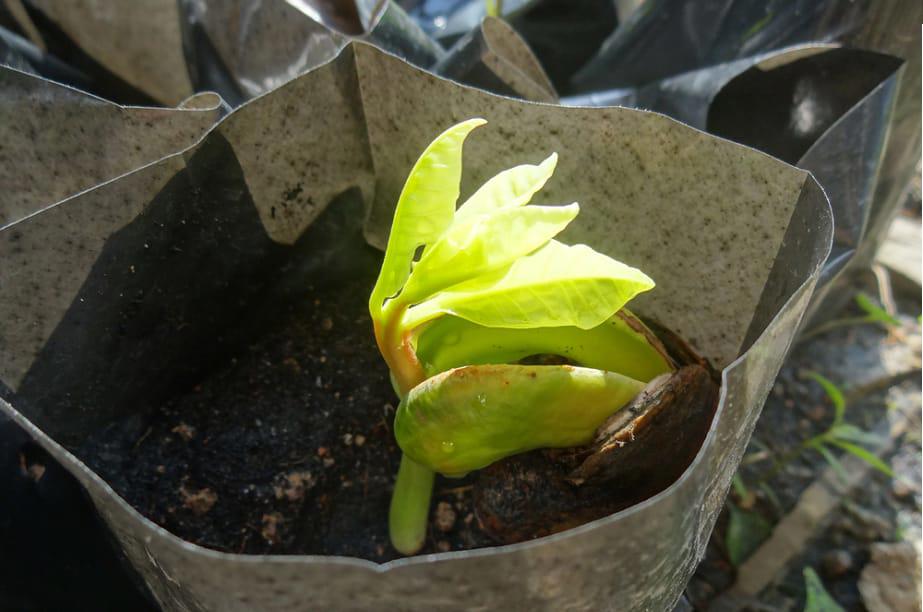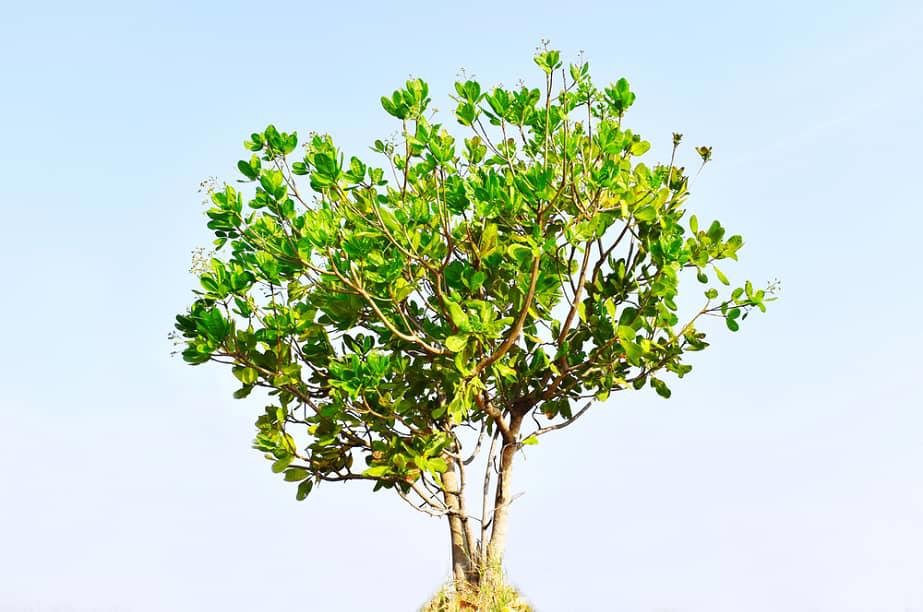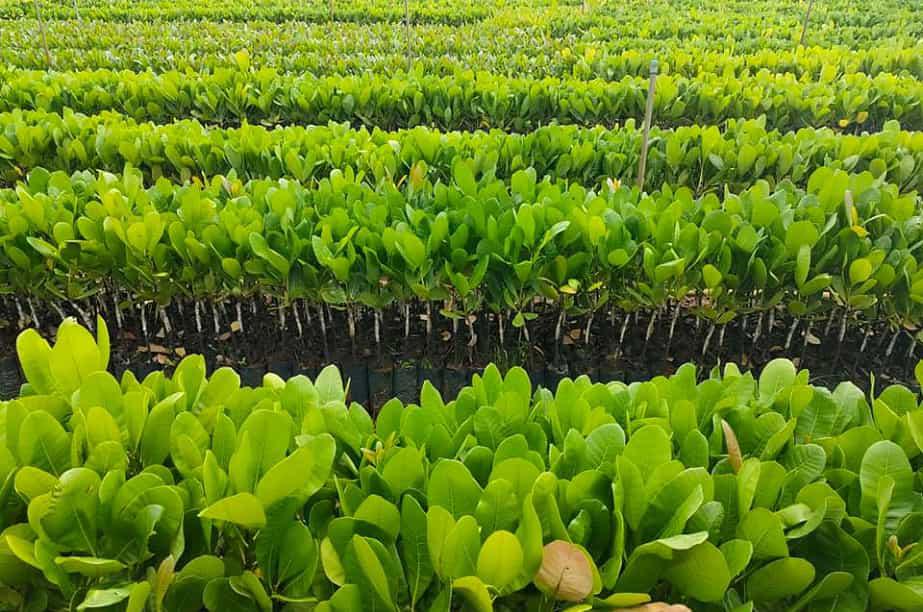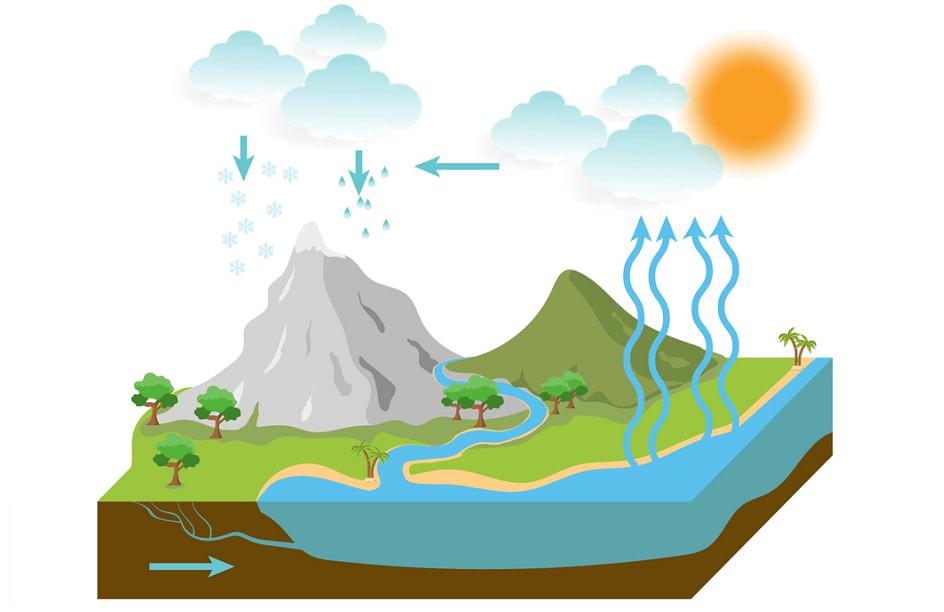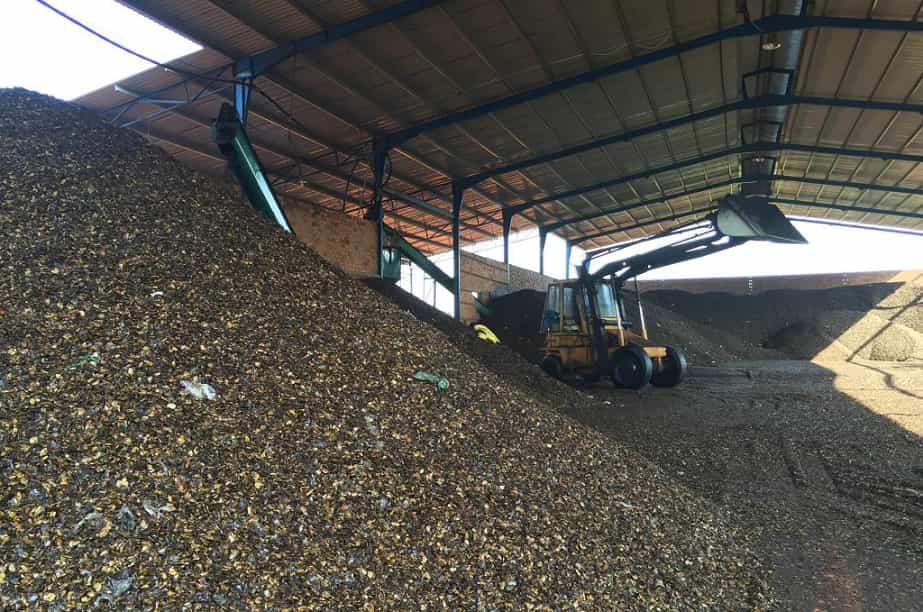Cashew trees can tolerate in places with diverse and harsh climatic conditions. Cashew grows best in the tropical climate, with sufficient annual rainfall and a well-defined dry season. The tree loves high temperatures, and is very sensitive to cold. Therefore, coastal belts of tropical regions located at altitudes from 0-600 m above sea level are a suitable natural environment for cashew growth.
However, there are also exceptions where cashew plantations may be found at altitudes up to 1,000 m above sea level such as in the Americas (Mexico, Brazil, Venezuela) or in Africa (Tanzania). Thus, the distribution of cashew is restricted to altitudes 1,000 m. In short, the higher elevation where cashews are grown compared to sea level, the slower the tree grows and the lower the yield.
Rainfall
The best region for cashew trees to grow well and produce abundant fruit is an area with a rain season of 6-7 months (rainfall between 800 mm and 1,500 mm per year (Barros, 1984, Frota et al., 1985)) and a dry season of 5-6 months long (coinciding with the flowering and fruiting season). Adapting to climatic conditions with two well-defined rainy and dry seasons, cashew trees will grow strongly and accumulate nutrients during the rainy season so that when the dry season enters, the tree will bear flowers and fruits favorably. According to Ohler (1979), cashews are also suitable for an area with a rainfall between 400 and 4,000 mm per year. Under higher rainfall conditions, cashew trees grow slowly, produce low quality products (small cashew nuts) and are susceptible to parasites. On the contrary, lower rainfall leads to irregular flowering and fruiting of cashews. In areas with higher rainfall, cashews require good drainage because they do not like any water stagnation. In areas with low rainfall (900 mm/year) or high rainfall (approximately 2,000 mm/year) but their ground has a lot of evaporation, planting cashew trees in enough large distances, weeding for prevent it from competing with cashew trees for water and nutrients-these methods should be done to retain soil moisture. It has been investigated that the distribution of rainfall from October to December shows an influence on the harvest time of cashew trees (early, medium or late). If the average monthly rainfall is 200 mm, all cashew trees will have high yields. On the contrary, if the average rainfall in November is more, it will have the opposite result for trees that flower early in November (Veerara - ghavan P.G., Vasavan M.G., "Cashew Res. Stn., Annakkasyam", 1979). In addition to rainfall requirements, the scope and extent of the dry season also have a clear influence on the harvest yield. To obtain a normal harvest yield, the dry season must last at least 4-5 months.
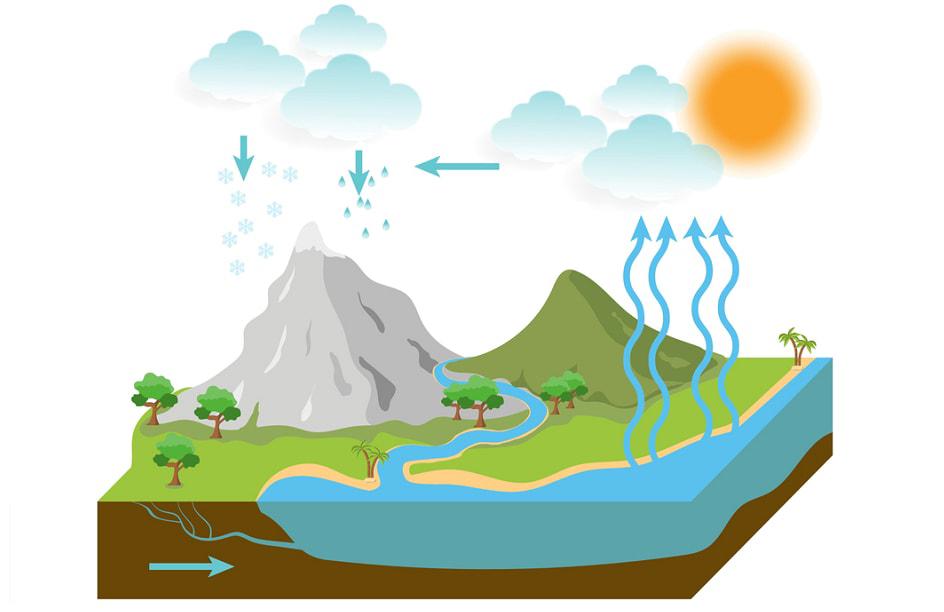
Temperature
The most suitable average annual temperature for cashew trees is 24 - 28 degrees Celsius, the average maximum temperature is 38 degrees Celsius and the average minimum temperature is 18 degrees Celsius. Cashew trees prefer high temperatures, which does not mean that they require constant temperatures. For instance, in East Africa, the temperature varies according to the seasons as below:
- Dry winter: average temperature is 18 - 24 degrees Celsius, average maximum temperature is 25 - 30 degrees Celsius, average minimum temperature is 12 - 19 degrees Celsius.
- Humid summer: average temperature is 26 - 28 degrees Celsius, average maximum temperature is 30 - 32 degrees Celsius, average minimum temperature is 20 - 24 degrees Celsius.
At the production stage of the cashew plant, low temperatures will affect flowering and fruit production, while in the development stage of young fruits, temperatures of 40 degrees Celsius sometimes cause flowers and fruits to drop.
Young cashew trees are sensitive to low temperatures, while mature cashew trees can withstand temperatures at 0 degrees Celsius for a short time. In southern Mozambique (latitude 26 degrees south) there are cashew varieties that can withstand low temperatures of 7 - 8 degrees Celsius during the nights of July and August. No damage to the leaves or soft tissue rot can be seen, the growth and reproduction phases become active again as soon as the temperature increases. From this fact, perhaps not far away, cashew trees will also be grown at higher altitudes (lower temperatures) thanks to genetic modification techniques as done with other crops.
Sunshine
As known, cashew is a sun-loving tree and produces fruit at the tips of the branches. Sunshine is one of the key factors for the cashew tree. To complete its reproduction phase (occurs during the rainy season) and production phase (occurs during the dry season) and to give a full yield, it must have required sunshine uniformly distributed over its entire foliage. On average, the optimal amount of sunshine is 2,000 h/year. For example, in Togo, the optimal amount of sunshine is held to be 2,464 hours/year with 1,285 hours in the flowering/fruiting time. In Brazil, the optimal sunshine lies between 1,500 and 2,000 h/year, while the amount of sunshine for India is considered to be 9 h/day from December to May and down it goes from June to November. In general, cashews are best grown in sunny, outdoor areas. Cloudy conditions reduce pollination and are favorable for outbreak of insect pests and diseases. Cloud cover, therefore, is also an important indicator to be considered. The suitable value of cloud cover for the cashew growing area is 3 - 5 tenths, the average is 4 tenths, 5 tenths is the final limit that is no longer suitable for cashews.
Relative humidity
Cashew trees are suitable for relative air humidity of 65 to 80%. In the flowering and fruiting time, low relative humidity will be fine for better output, whereas high relative humidity will affect the quantity and quality of production. However, in areas with minimum rainfall, high relative humidity during flowering and fruit-set is beneficial because cashew trees can balance their water requirements and can overcome periods of severe water shortage at the end of the dry season.
Wind velocity
Cashew is mostly grown along the sea-coast in almost all the cashew growing countries, where it is exposed to windy conditions throughout. Wind plays an important role in the dispersal of pollen and helps cross-pollination. The optimal wind speed for cashew growing areas may be estimated around 2 to 25 km/h. However, high velocity wind is harmful and causes flower and young fruit-drop, leading to failure in cashew planting. As a telling example, in the Fiji Islands, Antilles or salty wind (the wind contains salt) causes sunburn in young leaves and sprouts, or dry winds in West Africa increase water evaporation, leading to physiological imbalance during the flowering and fruiting period.
In summary, the climatic factors affecting cashew trees are:
- Dryness during the flowering and fruiting period will ensure better output.
- Cloudy conditions during flowering will increase flower wilting due to tea mosquito infection.
- Heavy rain during the flowering period will harm production.
- High temperatures (39 - 42 degrees Celsius) at the stage of young fruit growing (the size of a marble) will cause fruit-drop.
- Shorter dry periods, better cashew trees grow.
Soil
Cashew is often grown on idle lands, grown on many types of soil: loose sandy soil, volcanic soil, alluvial soil, iron-containing soil, Feralit soil, but they prefer friable, deep, well-drained soil (cashew trees do not like any form of water stagnation) with a pH of 4.5 to 6.5. With hard soils with a solid surface or shallow layers of gravel, despite natural fertility in soil, the cashew tree still grows slowly because this type of soil prevents the root system from finding water and nutrients. in a large volume of land to grow plants, especially during the dry season. It is suitable for fairly steep slopes with shallow top soils because its large canopy and surface root system protect the soil very well from runoff and erosion during the heavy monsoon rains. Thus, the cashew tree is more sensitive to physical properties than to the chemical properties of the soil, and the physical quality of the soil has a great influence on the results of cashew growing. The lack of certain nutrients in the soil that plants need can be easily overcome with appropriate and timely fertilization.
Nutritional requirements
Although cashew is an easy tree to grow, cashew trees also need to be provided with adequate nutrients for growth to obtain their high yield, especially in poor soil conditions.
According to a study written by Ohler and Coestere (1973), the manifestations of nutritional deficiencies affecting the growth of small cashew trees can be divided into the following three groups:
- Dangerous deficiencies that are lethal; in order of seriousness: Fe, Mg, K, N and Mo.
- Deficiencies that developed early but were not lethal. In order of severity: S, Ca and Zn.
- Deficiencies that developed slowly and did not cause severe effects; in order of importance: P, B and Cu.
Only through soil analysis can specifically determine nutrients that are lacking to supply cashew trees with these substances.
Results of studies conducted in Brazil and India showed that cashew plants respond well to Nitrogen and Phosphorus treatment but no response and less response with Potassium. On the other hand, calcium has a negative impact on the plant because this plant prefers soil with weak acidity.
According to Mohapatra and Vijaya Kumare Bhat (1973), a mature tree with high yield annually consumes 2.84 kg N, 0.752 kg P2O5 and 1.265 kg K2O. On this basis, it is possible to calculate the amount of fertilizer needed for cashew plants and plans for soil improvement.
Table - Optimal ecological characteristics for developing cashew production
|
0-600 m |
|
|
|
Rainfall |
800-1,600 mm/year |
|
Prolonged dry season |
4-6 months/year |
|
Average annual temperature of air |
24-28℃ |
|
Minimum annual temperature |
18℃ |
|
Optimum annual temperature |
38℃ |
|
Sunshine |
1,500/2,000 h/year |
|
Cloud cover |
3-4 tenths |
|
Relative humidity |
65-80% |
|
Wind velocity |
2-25 km/h |
|
|
|
Type |
Friable, sandy |
|
Depth |
> 1.5 m |
|
Gravels and stones |
Few or no |
|
Structure |
Completed growth |
|
Texture |
Loams (loam <10%) |
|
Sandy soil (loam: 10-20%) |
|
|
Sandy and loam soil (loam: 20-30%) |
|
|
Permeability |
High |
|
Inside drainage |
Normal or fast |
|
Fertility |
Normal or low |
|
pH |
4.5-6.5 |
Vietnamese conditions suitable for the ecological characteristics of cashews:
- Temperature
The South Central Coast, Central Highlands, Southeast and Mekong Delta all have temperatures very suitable for cashew trees. However, in the Central Highlands, cashews should not be grown at altitudes above 600 m because the temperature is low there.
- Rainfall
In the entire territory of Vietnam, the mean annual rainfall is suitable for cashew trees. However, the north is more favorable for cashew growth than the south because it has two distinct rainy and dry seasons and a dry season is long enough and coincides with the flowering and fruiting season of the cashew tree. The relative humidity of the air on average during the year and during the dry season in the south is also lower than in the north, which will be favorable for cashew trees to bear flowers and fruits.
- Sunshine
Only southern provinces have enough sunshine hours (2000 hours/year) for cashew growth.
- Soil
In southern Vietnam, there are many types of soils that can be planned for growing cashews without worrying about competing with other economic crops. These types of soils are all located in the cashew ecological zone (especially the Southeast region and South Central Coast) such as red sandy soil on the Binh Thuan coast, white sandy soil on the South Central coast, ancient gray alluvial soil (the main soil type occupying a large area in the Southeast region), basalt (including 3 main types: red basalt soil, degraded basalt soil and basalt soil mixed with pumice-distributed mainly in the Central Highlands provinces). These types of soil are mostly bare hills and mountains that need to be greened, so they are very convenient for plans to expand cashew growing areas.
|
Very good |
Good |
Fair |
Poor |
Very poor |
|
|
|||||
|
1.1. Soil depth |
> 1.5 m |
0.9-1.0 m |
0.45-0.9 m |
0.23-0.45 m |
< 0.23 m |
|
1.2. Soil texture |
Plastic clay |
Sandy loams |
Clay loams |
Heavy clay loams |
Heavy clay |
|
Sandy loams |
Alluvial |
Silty clay loams |
Heavy silty loams |
Clay, sandy clay |
|
|
Coastal sands |
Sandy clay loams |
Heavy sandy loams |
Clay, silty clay |
||
|
Heavy clay loams |
Clay |
||||
|
1.3. pH |
Acidity: Very slight to moderate (6.3-7.3) |
Acidity: Slight 6-6.3 |
Acidity: Moderate 5.6-5.9 |
Acidity: Strong 5.1-5.5 Alkalinity: Slight 7.4-7.8 |
Acidity: very strong < 5 Alkalinity: > 7.8 |
|
|||||
|
2.1. Slope (%) |
< 3% |
3-5% |
5-15% |
15-25% |
> 25% |
|
2.2. Groundwater |
2-5 m |
1.5-2 m |
8-10 m |
10-13 m |
> 13 m |
|
2.3. Erosion |
None to slight (e0) |
Slight (e1) |
Moderate (e2) |
Severe (e3) |
Very severe (e4) |
|
2.4. Drainage |
Well drained to somewhat well drained |
Well drained well drained to excessively drained |
Moderately drained |
Excessively drained |
Poorly |
|
|||||
|
3.1. Altitude (m above MSL) |
< 20 m |
20-120 m |
120-450 m |
450-750 m |
> 750 m |
|
3.2. Rainfall (mm/year) |
1,500-2,500 mm |
1,300-1,500 mm |
1,100-1,300 mm |
900-1,100 mm |
> 2,500 mm |
|
3.3. Distance away from sea |
< 100 miles |
50-100 miles |
100-150 miles |
150-200 miles |
> 200 miles |
|
3.4. Humidity |
70-80% |
65-70% |
60-65% |
50-60% |
< 50 or > 80% |
|
3.5. Temperature |
|||||
|
3.5.1. Maximum temperature (summer) (°C) |
32.22-37.77°C |
37.77-39.44°C |
39.44-41.11°C |
41.11-43.33°C |
> 43.33°C |
|
3.5.2. Minimum temperature (winter) (°C) |
15.55 °C |
13.88-15.55°C |
11.66-13.33°C |
8.88-13.33°C |
< 8.88°C |
|
3.6. Frost |
None (every 20 years) |
None (every 15 years) |
Very rarely (every 10 years) |
Sometimes (every 5 years) |
Frequently (annually) |
Table - The guidelines for selection of soil for cashew plantation (Mahopatra & Bhujan, 1974-Land selection for Cashew plantation - A survey report)
REFERENCE:
Thanh P. D. Cashew Nuts - Production and Processing (2003).





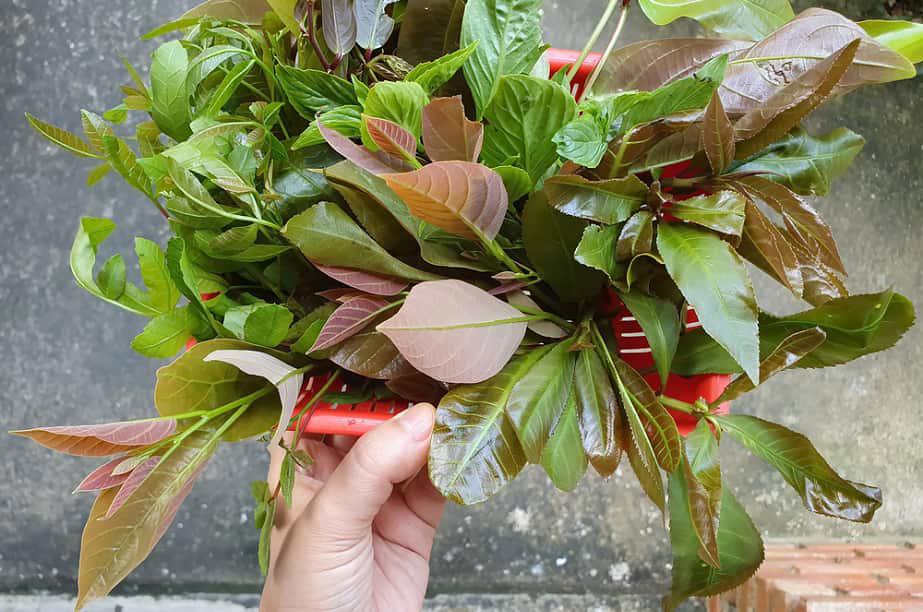



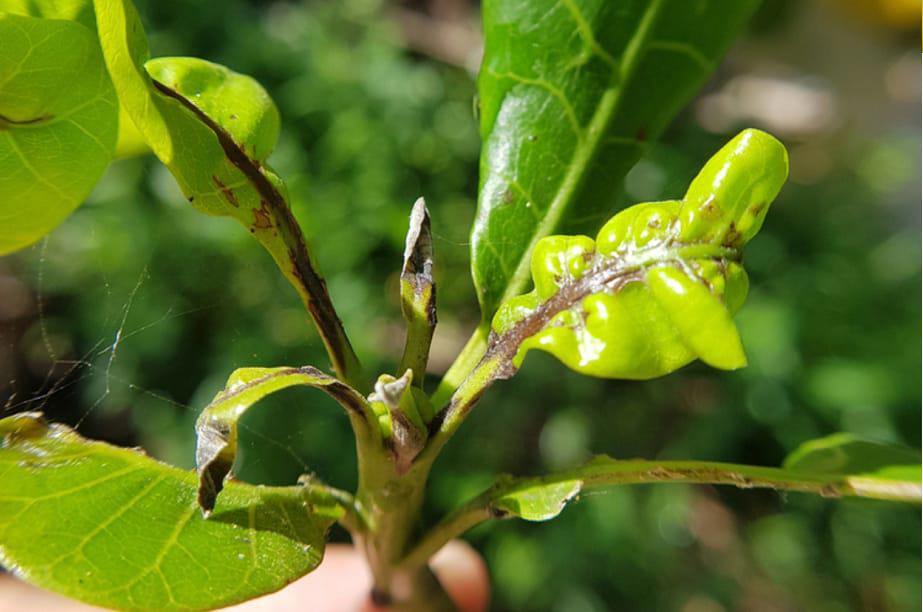
-1.jpg)
